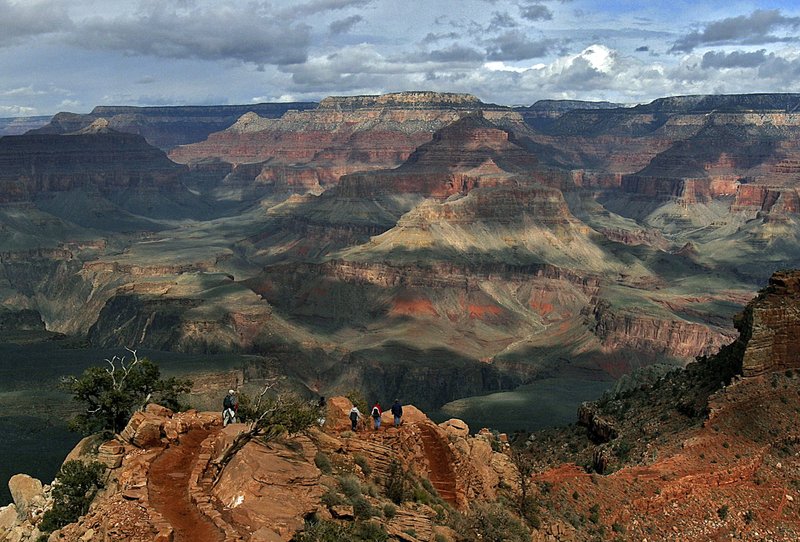FLAGSTAFF, Ariz. -- With snowfall dwindling at the Grand Canyon's North Rim, tourism promoters see an opportunity to stretch out the visiting season at the less popular side of the canyon so more people experience it and spend money in the region.
The canyon's North Rim is fully open less than half of the year and isn't as easy to get to as the South Rim, which attracts 90 percent of the canyon's annual 6.25 million visitors. The North Rim has equally stunning views but is more serene, with cooler temperatures and far fewer tour buses.
The North Rim lodge and its infrastructure weren't meant to handle harsh winters, and most employees are hired seasonally because of the historically heavy snow. Last season, however, saw just a fraction of the area's average, and the snow didn't come until January and February.
Overnight lodging at the North Rim shuts down Oct. 15, as do ranger-led programs and most concession services. The rim is open for visitor day trips until the highway closes Dec. 1 -- or with the first significant snowfall -- and then the entire area reopens in mid-May.
Advocates of lengthening the visiting season, some blaming or thanking climate change, envision adding a couple of weeks for now to both ends of the tourist season when the highway has little to no snow. They'd like to expand the season even more than that later.
"The end game for us is to get it open year-round or most of the year so we can promote ourselves as a four-season destination," said Camille Johnson, tourism director for Kane County, Utah, in Kanab, the closest major city in Utah to the North Rim.
The 30-year average for snowfall at the North Rim is more than 11 feet (3.4 meters) yearly, but the average over the past decade has fallen by more than 3 feet (0.9 meters) annually, according to the National Weather Service.
The season-to-season amounts can fluctuate greatly. About 3 feet (0.9 meters) fell between last October and May, indicative of a drier weather pattern in the Southwest. More than four times that amount fell in the same period the previous season, making a weather-based decision to extend the visitor season more difficult.
Readjusting the North Rim season makes sense from a climate change perspective, said Jonathan Overpeck, a climate scientist at the University of Michigan
"There's some caution warranted because we will still get the big snow storms and the big snow years that they want to protect the visitors from," he said Tuesday.
The North Rim sits at more than 8,000 feet (2,440 meters) and is bordered by national forest land where a herd of bison roam. It has few amenities -- a 1930s lodge that's a national historic landmark, a gas station and a campground.
A drive from the Utah-Arizona border takes three hours roundtrip, so adding services and hiring people to provide them would be key to attracting visitors beyond the May-October period, said Dirk Clayson, chairman of the Kane County Board of Commissioners.
"The problem is solvable," Clayson said. "Whatever we can do to influence, raise funds or lobby back in D.C. for additional staffing, we're willing to do."
National on 09/12/2018